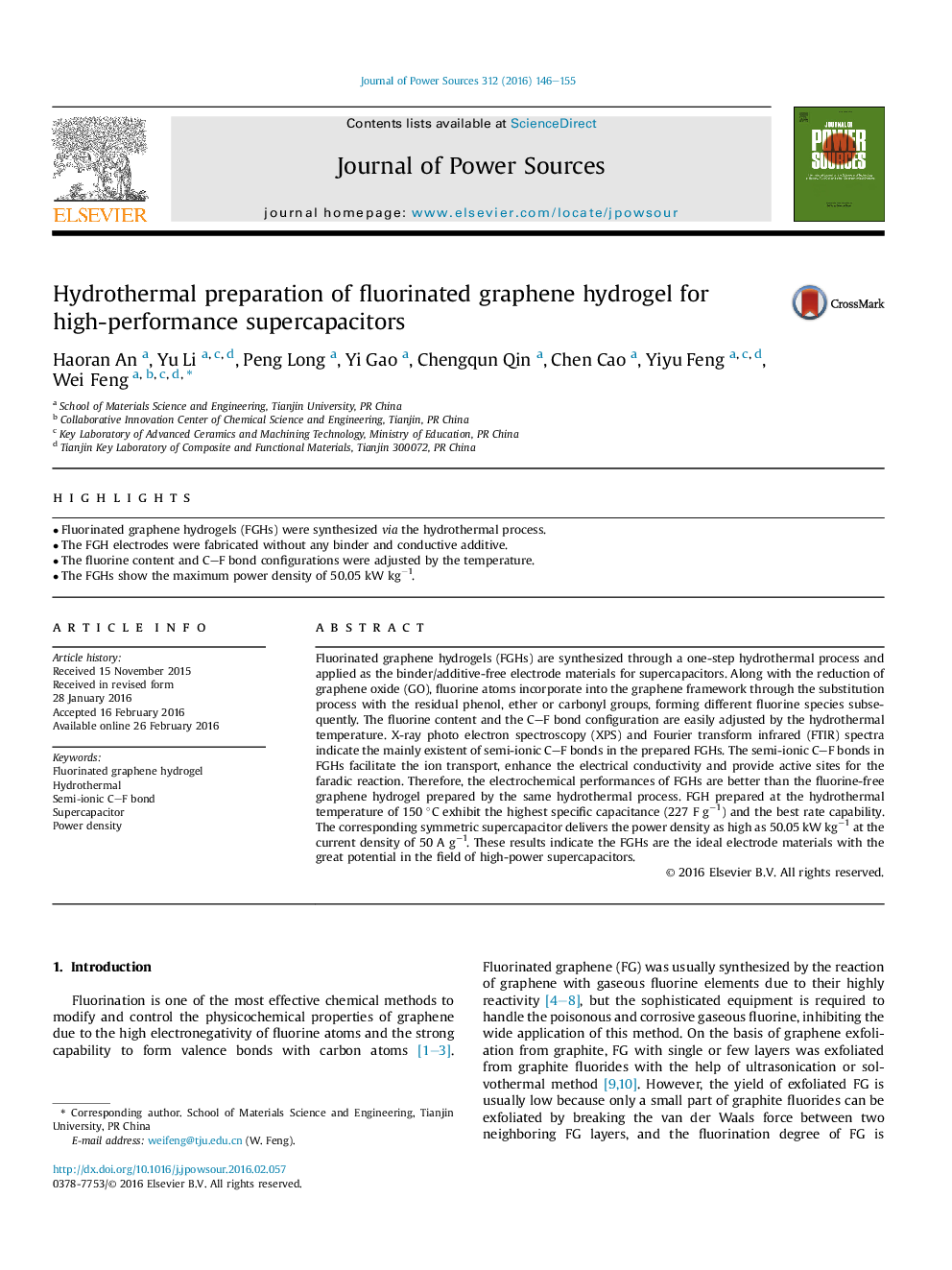| Article ID | Journal | Published Year | Pages | File Type |
|---|---|---|---|---|
| 1285463 | Journal of Power Sources | 2016 | 10 Pages |
•Fluorinated graphene hydrogels (FGHs) were synthesized via the hydrothermal process.•The FGH electrodes were fabricated without any binder and conductive additive.•The fluorine content and CF bond configurations were adjusted by the temperature.•The FGHs show the maximum power density of 50.05 kW kg−1.
Fluorinated graphene hydrogels (FGHs) are synthesized through a one-step hydrothermal process and applied as the binder/additive-free electrode materials for supercapacitors. Along with the reduction of graphene oxide (GO), fluorine atoms incorporate into the graphene framework through the substitution process with the residual phenol, ether or carbonyl groups, forming different fluorine species subsequently. The fluorine content and the CF bond configuration are easily adjusted by the hydrothermal temperature. X-ray photo electron spectroscopy (XPS) and Fourier transform infrared (FTIR) spectra indicate the mainly existent of semi-ionic CF bonds in the prepared FGHs. The semi-ionic CF bonds in FGHs facilitate the ion transport, enhance the electrical conductivity and provide active sites for the faradic reaction. Therefore, the electrochemical performances of FGHs are better than the fluorine-free graphene hydrogel prepared by the same hydrothermal process. FGH prepared at the hydrothermal temperature of 150 °C exhibit the highest specific capacitance (227 F g−1) and the best rate capability. The corresponding symmetric supercapacitor delivers the power density as high as 50.05 kW kg−1 at the current density of 50 A g−1. These results indicate the FGHs are the ideal electrode materials with the great potential in the field of high-power supercapacitors.
